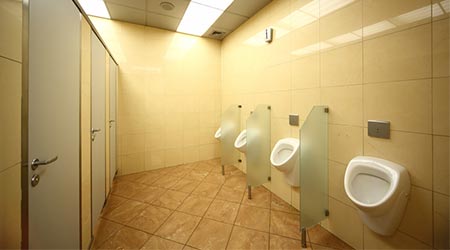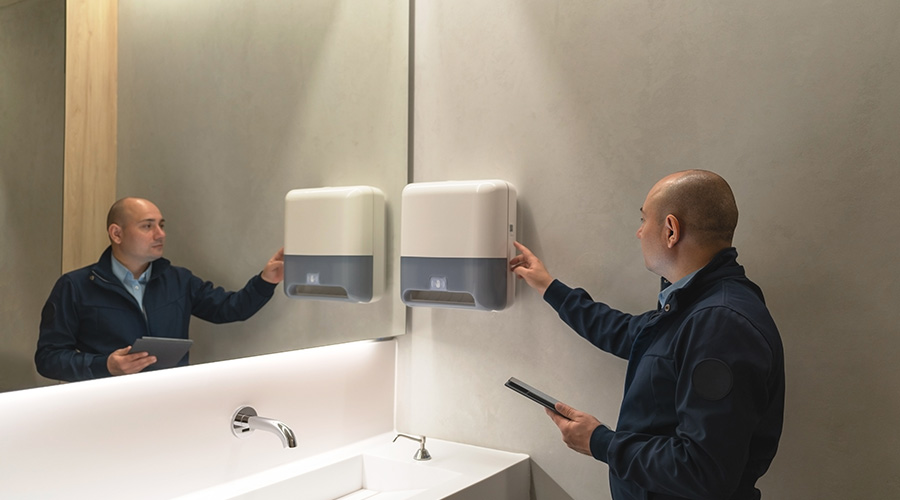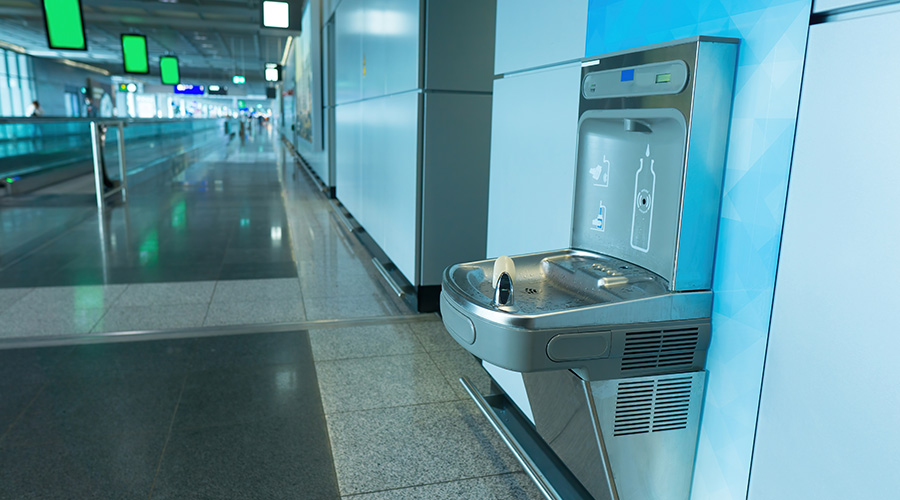Plumbing Upgrades: Strategies for Success
Part one of a two-part article on plumbing upgrades
Upgrades of restrooms and plumbing systems remain popular options for institutional and commercial facilities looking to improve overall comfort and efficiency. One essential component of any successful upgrade is clearly defined goals. Without them, managers will not be able to effectively specify products and ensure the upgrade’s long-term performance.
By focusing on potential goals such as water conservation, improved hygiene and lower maintenance and cleaning costs during planning and specification, managers can deliver finished upgrades of restrooms and plumbing systems that deliver long-term performance.
Facilities pay twice for water. First, they pay for the water consumed and, second, they pay for the water that returns to the sewer for transmission to the waste treatment plant and final discharge. Conversely, water-conservation savings are twofold. Water that facilities never use costs nothing, and it does not require subsequent treatment.
Water-conservation policies need to address opportunities to optimize both water use and waste. Managers should base water-conservation programs on the amount of water their facilities actually use, the condition of the plumbing system, and activities related to system maintenance.
One major challenge managers face in curtailing water use is the age of their facilities’ plumbing system components, as well as the condition of a municipality’s piping infrastructure.
Water transmission and treatment infrastructures are undergoing upgrades, but some areas face significant challenges — for example, California where drought has been prevalent for years, and Flint, Mich., where residents became ill due to lead pipes and improper water treatment. Playing catch-up for years of neglect is costly, and peripheral damage has been occurring unseen for many years, all while demand for water is increasing.
System upgrades also must be accompanied by infrastructure asset expansion to accommodate increased system loads. Industry organizations such as the American Water Works Association (AWWA), which offers a plumbing system asset management policy, encourage facilities to treat asset management of plumbing systems as a key component to ensure a facility provides a cost-effective, adequate and reliable supply and delivery of safe water.
AWWA encourages water utilities to adopt a proactive, sustainable approach to asset management through the life cycle of the asset. The process starts with effective planning and design, continues through operation and maintenance, and incorporates appropriate rehabilitation, replacement, and asset disposal. Managers should adopt such measures for facility water conservation policies and programs.
Another industry organization, the American Society of Civil Engineers, supports water-conservation policies and programs that achieve:
• a sustainable balance between demand management and new source development
• reduced waste through metering, leak control, and other measures
• water conservation education
• sharing of best practices
• research into and implementation of efficient water-use practices
• demand management consistent with climate and availability
• drought preparedness.
As with AWWA, managers can adopt these policies for use in their facilities beginning with a deep knowledge of the community water-distribution system, especially its capacity versus demand. The planning and design processes for the system should incorporate a study that forecasts remaining system life and budget resources for annual preventive maintenance, a three-to-five year maintenance plan, and a 30-year plan.
Managers also should incorporate an efficiency strategy into the policy to link specific programs with organizational responsibility. For example, the policy should assign responsibilities for:
• overall policy and bylaw development and updating management
• water and wastewater rates, rebates and subsidy programs to accounting
• information, education and communication, and community programs to human relations.
The facilities team should assume responsibility for measuring and monitoring methods and implementation, as well as overseeing common water use issues, such as irrigation and fire control training.
Metering areas of facilities or specific fixtures also is an effective way to measure and control water use and uncover hidden areas of waste. Meters fall into five basic types: propeller, positive displacement, vortex, electromagnetic, and ultrasonic. Selecting the right meter is critical to accuracy and long performance life and depends on flow volume, pressure, and cross section. Manufacturers can provide additional information and selection guides.
Related Topics:














